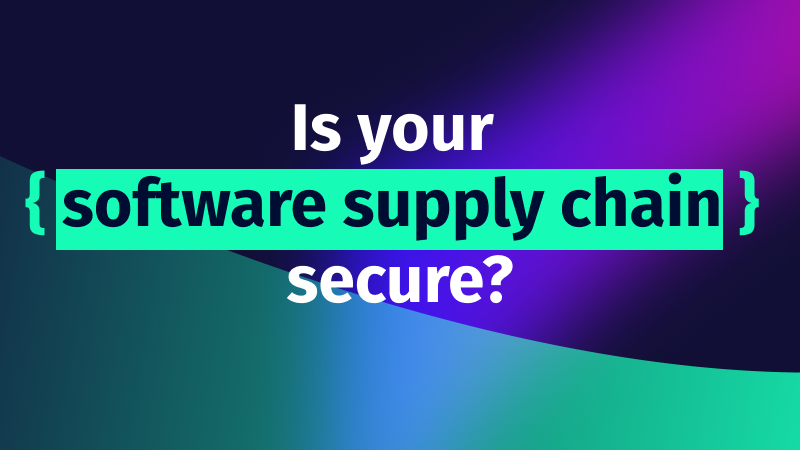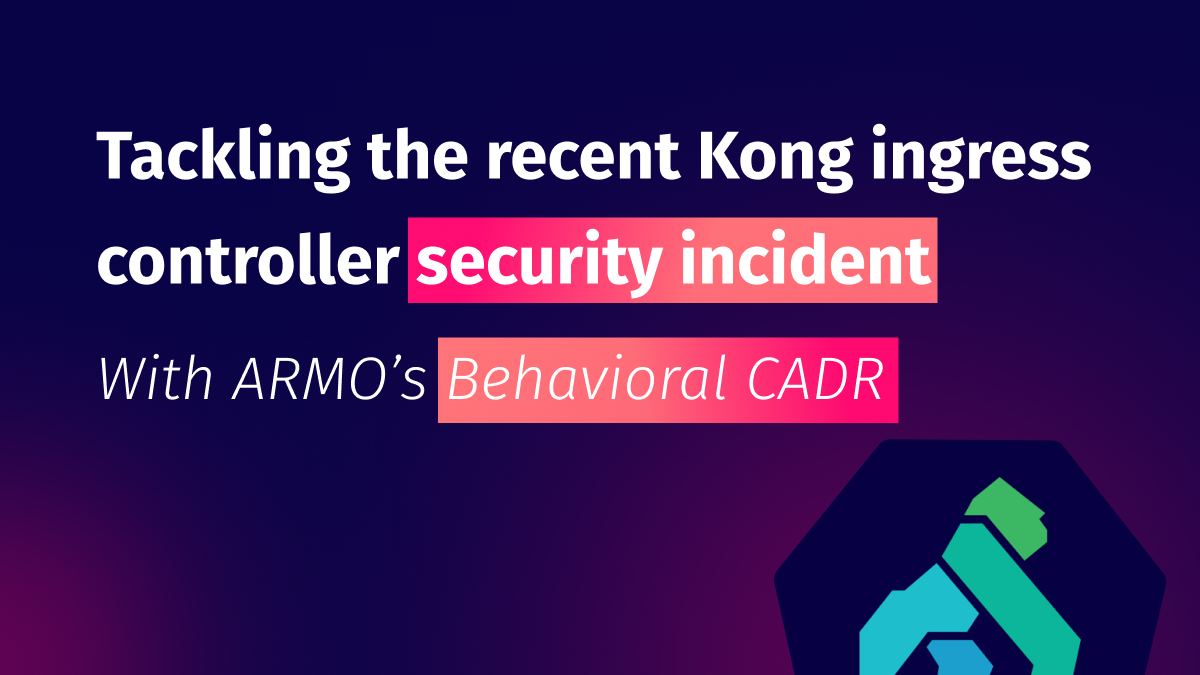ARMO Now Supports GKE Autopilot Clusters 🎉
We’re excited to announce that ARMO now fully supports Google Kubernetes Engine (GKE) Autopilot clusters!...
 Blog
Blog

Jun 20, 2024
As a powerful and widely adopted open-source platform, the complexity of Kubernetes is not to be underestimated. Managing a Kubernetes environment requires a deep understanding of how its various components interact, especially when it comes to observability and security.
This blog post will delve into the intricacies of golden signals in Kubernetes, their connection to security issues, and how they can be leveraged to safeguard a Kubernetes environment against common attack chains.
Originating from the site reliability engineering (SRE) discipline, golden signals are a set of key performance indicators (KPIs) that are essential for monitoring and managing the user experience and system reliability. They act as an early warning system that identifies issues with the system’s performance, security, and availability objectives.
Technology today is fast-paced and ever-changing, making the role of DevOps/SRE teams more crucial than ever. These teams ensure seamless application integration, deployment, and operation, often across diverse and dynamic environments. Golden signals are indispensable tools in their toolbox, enabling teams to:
Four main golden signals form the cornerstone of system monitoring and observability.
Latency tells you how long it takes for a request to be processed. It is a critical indicator of system responsiveness. High or increasing latency can signal performance bottlenecks, resource contention, or potential security threats.
For instance, in the realm of security, a sudden spike in latency could be indicative of a distributed denial-of-service (DDoS) attack, where attackers flood a system with traffic to make it slow or unavailable. Monitoring latency helps identify and mitigate such threats promptly.
Traffic represents the number of requests received by the system. Monitoring this metric helps understand system load, identify usage patterns, and detect anomalies such as sudden traffic spikes, which could indicate a DDoS attack or a popular feature.
For example, a significant increase in traffic from a specific geographical location, especially one not typically associated with your user base, could indicate your system is being hit by a coordinated cyberattack or an attempt to probe vulnerabilities. As a result, recognizing this unusual traffic pattern early enables teams to initiate appropriate defensive measures.
Errors indicate the rate of failed requests. A high error rate can mean there are problems with the application code, system resources, or dependencies, or you may have potential security vulnerabilities. Consider this scenario: An online banking application starts registering an unusual error rate specifically for fund transfers between accounts. Upon investigation, you discover that these errors are due to a new software update that inadvertently introduced a bug in the transaction validation process. If not caught and remediated immediately, this could lead to unauthorized transfers, potential financial loss, and a severe dent in user trust.
Saturation measures the utilization of resources such as CPU and memory. High saturation levels indicate the system is nearing capacity, affecting performance and potentially leading to failures.
Let’s take a look at this from a security perspective. Say a container within a Kubernetes cluster experiences sudden, high saturation levels in its CPU utilization. Further examination finds that malicious software is running a crypto-mining operation within the container, using up its resources. Monitoring saturation allows the security team to detect the breach and initiate the necessary countermeasures.
In the context of Kubernetes security, all four of these signals are pivotal in detecting and mitigating security risks in containerized environments.
As a complex and dynamic orchestration platform, Kubernetes presents unique challenges and opportunities for implementing and monitoring golden signals. This section will explore how the four primary golden signals can be contextualized in Kubernetes and connected to potential security issues.
In Kubernetes, latency is the time taken for a request to travel from a service to a pod. High latency can indicate network issues, resource contention, or anomalies. Unusual spikes in latency can indicate potential threats such as network probing, data exfiltration, or resource exhaustion attacks.
Traffic in Kubernetes is represented by the number of requests sent to a service or a pod. Monitoring traffic helps identify usage patterns and detect abnormal spikes or drops. A sudden and unexplained increase in traffic can be a sign of a DDoS attack, unauthorized access attempts, or potential security breaches.
Errors in a Kubernetes environment can manifest as a pod failing to respond to a request, a service failing to route a request, or a pod crashing. A high error rate can signal vulnerabilities, misconfigurations, or active exploitation attempts.
Saturation in Kubernetes is measured by monitoring a node or pod’s CPU or memory usage. It shows how close resources are to their capacity. For instance, excessive resource consumption or high saturation levels can be indicators of compromised workloads, cryptomining attacks, or resource exhaustion attacks.
By contextualizing latency, traffic, errors, and saturation within the Kubernetes environment and understanding their security implications, organizations can enhance their security posture and protect their containerized applications and infrastructure from a myriad of cyber threats.
In the realm of Kubernetes security, understanding the common attack chains is pivotal. Golden signals play a significant role in their early detection, allowing organizations to thwart potential breaches. Below, we explain how monitoring golden signals can help detect the top four attack chains discussed in our earlier post.
As with everything, when using golden signals in your Kubernetes environment, there are some actions any organization should take.
One of the foundational steps in monitoring Kubernetes golden signals is to create alerts. Alerts act as your frontline defense, notifying teams of potential issues before they escalate. However, it’s important to be mindful of alert fatigue. Having too many alerts – important ones, mixed with non-critical ones can overwhelm teams, and divert their attention away from truly significant issues. It’s critical to ensure that the alerts you set up are meaningful and actionable.
Suggested alerts:
Continuously revisiting your golden signal metrics is essential for maintaining a proactive stance on Kubernetes security. It’s not just about reacting to alerts but also analyzing trends, identifying areas for improvement, and anticipating potential issues. Here are some strategies for effective metric reviews:
Leveraging the right tools is crucial for effectively monitoring golden signals in Kubernetes. Several popular ones can aid in this endeavor:
By utilizing these tools, teams can comprehensively view the Kubernetes environment, monitor golden signals effectively, and respond promptly to any anomalies or security threats.
The symbiosis between golden signals and security is evident. Anomalies in latency, traffic spikes, elevated error rates, and resource saturation can all be indicators of security incidents. Whether it’s a misconfiguration exploit, a container breakout attempt, or a privilege escalation attack, golden signals act as an early warning system, enabling timely detection and mitigation.
By setting up contextual alerts, conducting regular metric reviews, and utilizing monitoring tools, organizations can harness the power of golden signals to safeguard their Kubernetes clusters. As a result, this proactive approach to monitoring and security is indispensable in today’s cyber threat landscape.
Golden signals are the linchpins of system observability and performance monitoring. They offer invaluable insights into the health and functioning of applications and infrastructure, enabling teams to proactively uncover and remediate issues. In addition, they serve as sentinels, guarding against performance bottlenecks, system failures, and security vulnerabilities.
ARMO Platform is a powerful solution designed to examine and enhance the security posture of Kubernetes clusters. It performs comprehensive assessments, identifies misconfigurations, and provides actionable recommendations to fortify cluster security.
ARMO Platform can use Kubernetes golden signals to bolster security in several ways:
By leveraging ARMO Platform, organizations can gain deeper insights into their enhanced Kubernetes security posture, proactively address vulnerabilities, and ensure the resilience and integrity of their containerized applications and infrastructure.
Start using ARMO Platform today, and learn how to utilize golden signals to boost the security of your Kubernetes environment.

The only runtime-driven, open-source first, cloud security platform:
Continuously minimizes cloud attack surface
Secures your registries, clusters and images
Protects your on-prem and cloud workloads

We’re excited to announce that ARMO now fully supports Google Kubernetes Engine (GKE) Autopilot clusters!...

Software supply chain attacks cost businesses $45.8 billion globally in 2023 alone, and is projected...

Imagine this situation: you recently updated one of your infrastructure software components. A few weeks...